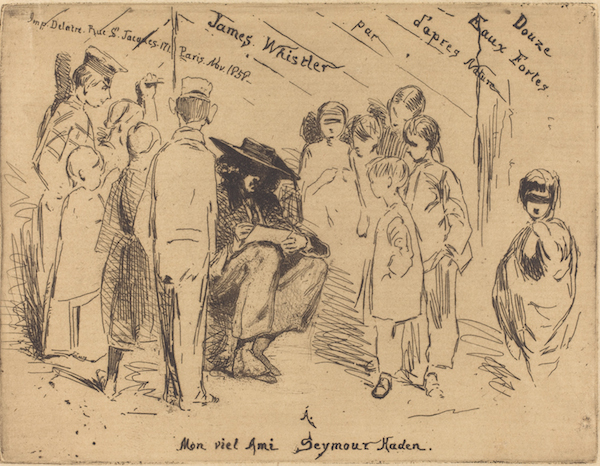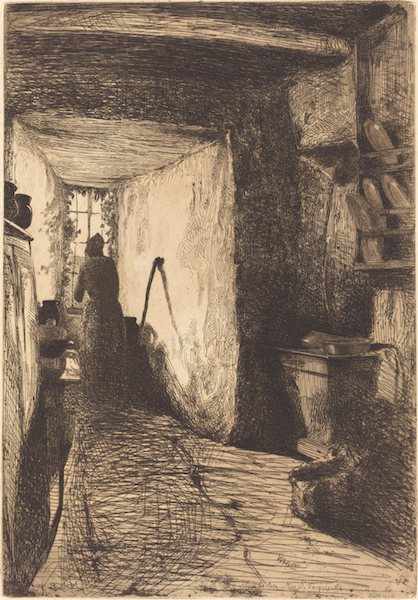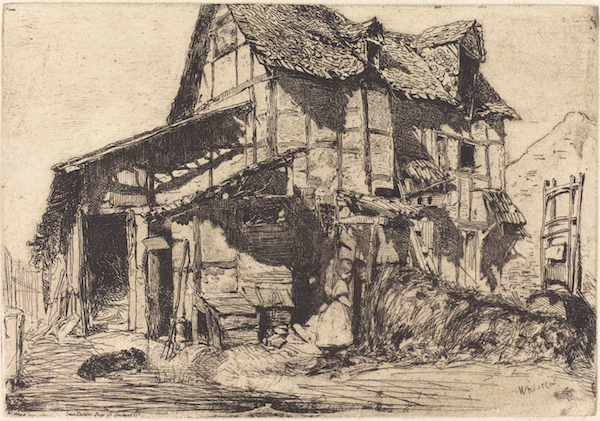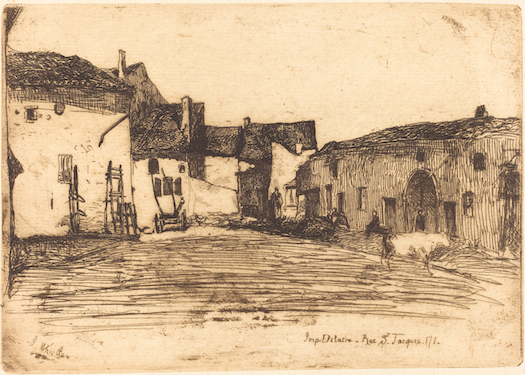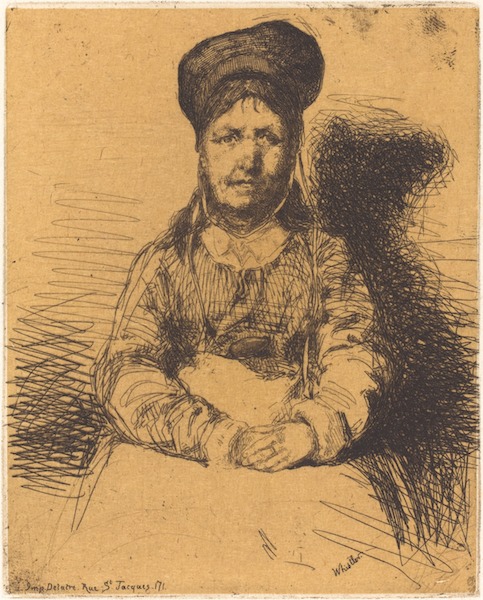The French Set
When Whistler arrived in Paris in 1855, he concentrated on drawing and painting. He soon began to paint working class subjects in the Realist style championed by both painter Gustave Courbet and poet Charles Baudelaire. He also made etchings of these subjects — flower sellers, milliners, and tinkers, among them.
Click on image to advance the slides.
By the end of summer, 1858, Whistler decided to take a trip up the Rhine to make etchings of rural subjects that would complement the Realist prints he had made of working people in Paris. He and his friend Ernest Delannoy had hoped to reach Amsterdam to see the work of Rembrandt but having run out of money, only made it as far north as Cologne. Whistler packed some copper plates and an etching needle, also materials to make pencil sketches, drawings and watercolors. Having few plates with him, he made sketches he could later use for etchings. The two artists took their subjects from the everyday world: a mustard merchant, a farmyard in Alsace, a street in the town of Saverne, a small girl standing outside her cottage, a peasant woman in her kitchen, a run-down farmhouse. These subjects combined the composition and perspective of the scenes he so admired in the work of 17th-Century Dutch etchers with the Realist style he had recently embraced.
Whistler’s Etchings: The Trip Through the Rhineland from Karen Thomas on Vimeo.
Upon his return to Paris, Whistler took his now-completed etched plates to master printer Auguste Delâtre, who he had met through fellow artists Félix Bracquemond and Alphonse Legros. From Delâtre, Whistler learned the nuanced art of printing, and the importance of the right paper, which Whistler sometimes tore from antique books in the stalls along the quays. While most artists gave their plates to a master printer to be processed, Whistler learned the craft himself, a skill which gave him total control of the outcome and allowed him to achieve whatever effect he desired. Delâtre would also introduce Whistler to the work of the Japanese ukiyo-e artists, whose woodblock prints would have a profound effect on the twenty-four year old for years to come.
The etchings from Paris and the Rhine trip were released in France as the “Twelve Etchings from Nature” of 1858, generally referred to as the French Set. The publication of the French Set in both Paris and London established young Whistler as a professional artist. In spring 1859, Whistler’s prints won acceptance at the Salon in Paris and at the Royal Academy in London. In the 1860s, even when Whistler’s paintings met with mixed receptions and regular rejection from both the Academy and the Salon, critics simultaneously acknowledged his strengths as a draftsman and printmaker.

